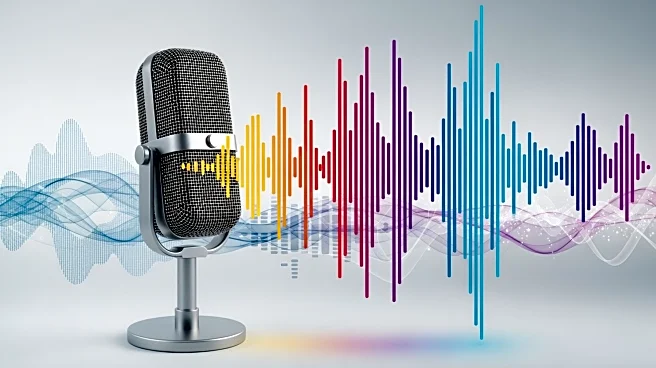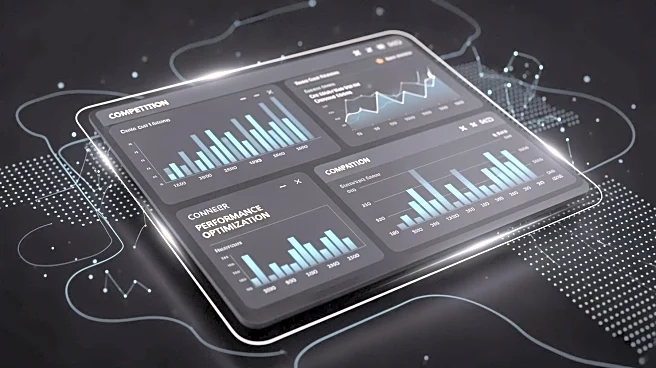What's Happening?
The digital audio advertising industry is witnessing significant advancements with the introduction of innovative tools like AudioPixel and AdsWizz's Dynamic Creatives with Synthetic Voice. These technologies
are designed to enhance listener engagement by tying audio ad exposure to real-world actions such as site visits, downloads, and purchases. AudioPixel allows advertisers to pinpoint when additional exposure ceases to drive results, enabling them to adjust their creative strategies accordingly. AdsWizz's Dynamic Creatives with Synthetic Voice further support this by allowing advertisers to instantly produce and personalize audio ads at scale, ensuring that repeated messages remain engaging rather than repetitive. This shift from traditional frequency models to a more data-driven approach is transforming how brands interact with audiences across various digital platforms.
Why It's Important?
The evolution of digital audio advertising is crucial for marketers seeking to maximize their return on investment in a rapidly changing media landscape. By leveraging precise data and innovative tools, advertisers can better understand listener behavior and optimize their campaigns for improved engagement and conversion rates. This approach not only enhances brand awareness but also drives measurable actions, such as increased sales and site visits. As audiences continue to move fluidly across platforms, the ability to adapt and personalize content in real-time becomes increasingly important. Brands that successfully integrate these technologies stand to gain a competitive edge by maintaining relevance and resonance with their target audiences.
What's Next?
As digital audio advertising continues to evolve, brands are expected to further explore and refine their strategies around frequency and engagement. The industry is likely to see increased adoption of tools like AudioPixel and Dynamic Creatives with Synthetic Voice, as advertisers seek to balance consistency with creativity. This will involve a deeper understanding of how different types of messages resonate over time and across various listening contexts. Additionally, the integration of more comprehensive data analytics will enable marketers to create more targeted and effective campaigns, potentially leading to new standards in audio advertising frequency and impact.
Beyond the Headlines
The shift towards data-driven audio advertising raises important questions about privacy and data usage. As advertisers gain more visibility into listener behavior, there is a growing need to ensure that data collection and usage comply with privacy regulations and ethical standards. Furthermore, the ability to personalize ads at scale may lead to concerns about the homogenization of content and the potential loss of creative diversity. Brands will need to navigate these challenges carefully to maintain consumer trust and uphold the integrity of their advertising efforts.











